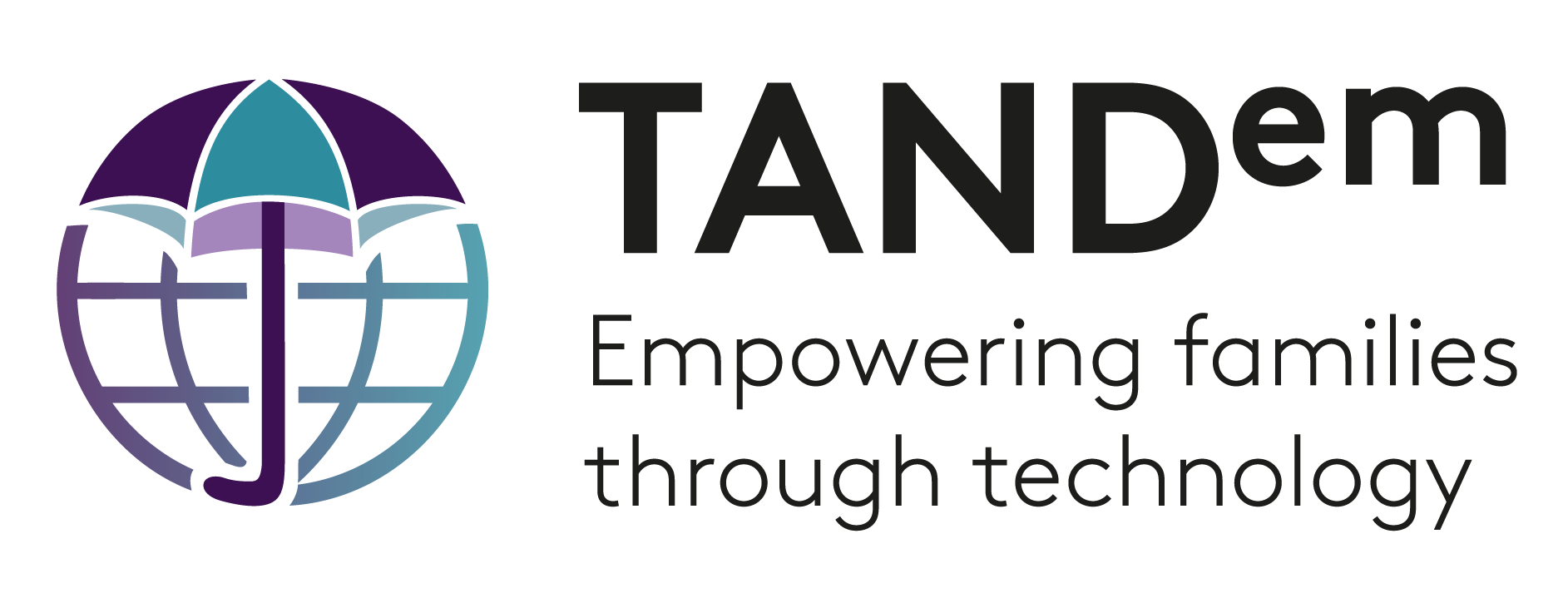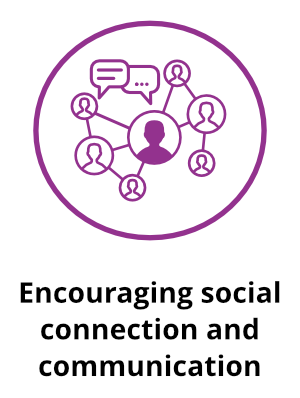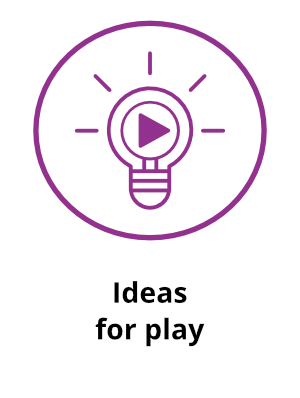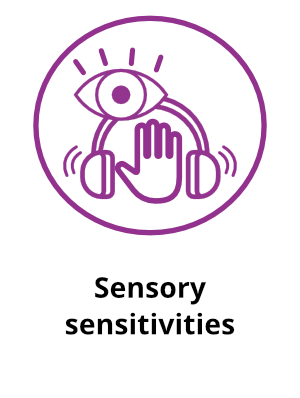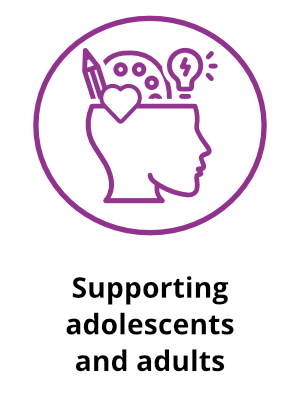Autism-like Cluster
Home > TAND Clusters > Autism-like > What to do > Encouraging social connection and communication
Encouraging social connection and communication
There are a number of simple strategies you can implement at home to encourage your child’s social connection with you, and their communication skills. These strategies come from a family of interventions called ‘Naturalistic Developmental Behavioural Interventions’ (NDBIs). They all include an emphasis on embedding intervention in natural environments with natural partners, in other words in your usual daily routines at home with caregivers, like bathing, dressing, mealtimes, feeding pets, or sweeping. They also prioritise developmentally sensible goals and activities – this means things that other children their age would be doing. The goal is to use these strategies to help your child tune in to your language, and to help them learn in any activity, from washing hands to playing with a ball. This is not a training in any specific NDBI programme, but rather a collection of evidence-informed strategies common to many NDBIs (see footnote [1]). To access more detailed training courses and resources for NDBIs, see the resource panel.
Strategies to promote engagement, to encourage communication and for deliberate teaching moments are presented below.
How-to Guide for Families
[autismnavigator.com]
Quick Tips for Parents, Caregivers of Children with Autism
[autismspeaks.org]
Advancing Social-Communication and Play (ASAP)
[med.unc.edu]
Encourage social engagement
Be face-to-face on your child's level and arrange the environment
- During play or other teaching moments, promote engagement by arranging the environment to be face-to-face on your child’s level. Orient your body to be facing him or her.
- If playing with toys, have them between you if possible, and try to keep the environment clear of too many distractions.
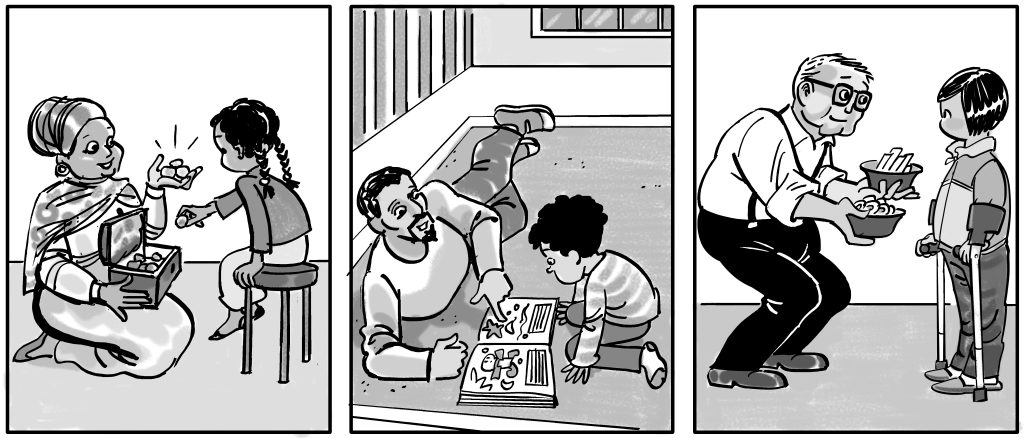
Follow your child's lead
- Allow your child to choose a toy or activity from a set of appropriate choices. You may set limits to choices or having more of something e.g. snacks.
- Join in their play by helping them, handing them more pieces, or playing another role they might copy.
- Copy your child’s actions or sounds. See if they notice and do their action again.
- Talk about what your child is doing rather than give directions or instructions.
- In necessary activities like washing and dressing, incorporate choices where possible, e.g. “Do you want to wash face or put on the shirt?” while holding the choices out clearly.
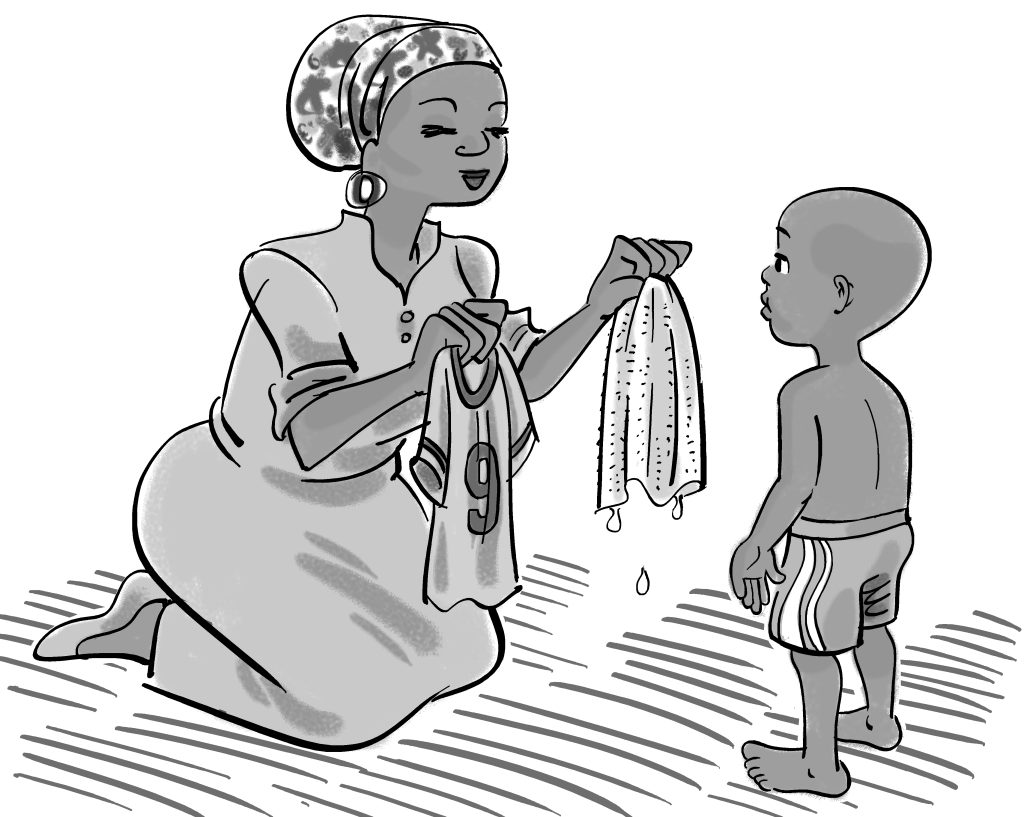
Use positive emotion and an animated tone of voice
- Show a rich, positive emotion to promote child engagement. Be enthusiastic and positive.
- This includes animated voice, or tone, gestures, and facial expressions.
- Match your level of animation to your child’s sensory needs. In other words, don’t overdo it if your child is sensitive to loud sounds.
Model appropriate language and play
- Match your language to your child’s level or slightly above (1-up rule: use phrases of one word longer than your child uses). If your child does not use or rarely uses words, use one word at a time.
- Use your tone and gestures to help your child understand. For example, say “get your shoe” with a point after you have put one shoe on – the context will help your child understand the instruction. Next time try “get your shoe” with the point for the first shoe.
- Try to avoid giving commands or asking “test” questions when you are interacting with your child, like “what’s this?” in a book.
- Use mostly comments about what your child is focusing on, doing, or experiencing.
- Use specific vocabulary like “put on table” vs. “put there”.
- Imitate your child’s play actions or sounds to get their attention, then model some new ones, especially if your child is watching you or what you are doing.
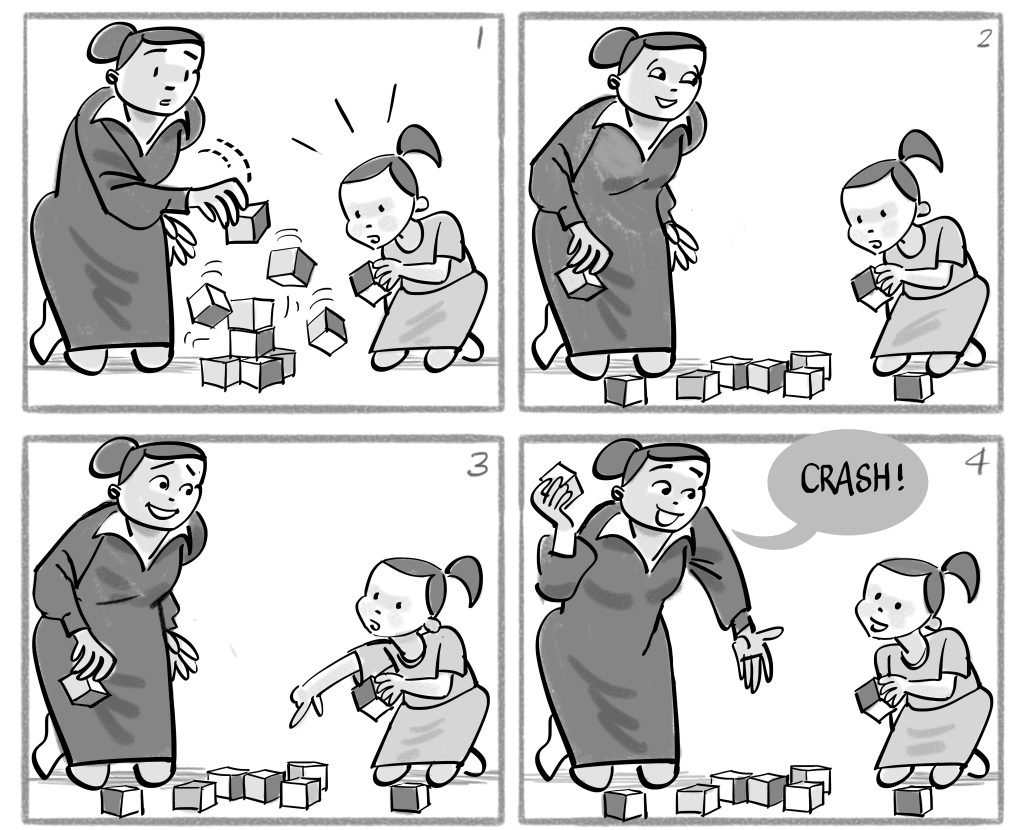
Encourage communication
Respond to attempts to communicate
- Wait, give time for your child to communicate.
- Respond to all attempts to communicate, including sounds, eye gaze, words, gestures, joint attention etc. especially before they become a moan or cry.
- Repeat, clarify, and/or expand your child’s attempts.
- Respond as if your child’s communication is meaningful.
- Respond naturally by commenting on the topic or responding to the request.

Use communication temptations
- Deliberately create situations to encourage your child to communicate, for example, put toys in sight but out of reach, or inside a container they can’t open themselves. If eating is a battle, DON’T try this with food. Rather model the language you would like them to use while giving them small portions.
- You can also do something “silly” or unexpected in a predictable routine that encourages a reaction.
- Provide choices when possible within (e.g. “Do you want grapes or apple?”) and between activities (e.g. “Should we play with books or puzzles next?”).
- Follow each temptation with a brief period of expectant waiting to give your child an opportunity to communicate in some way.
- Take a quick turn in an activity so that your child learns to wait briefly.
- Short videos of these strategies can be accessed in the resource panel. Here you will also find a guide for families and caregivers of children with severe intellectual disabilities to understand more about communication challenges. The guide contains two checklists to help you determine how your child communicates, as well as helpful strategies to help improve communication.
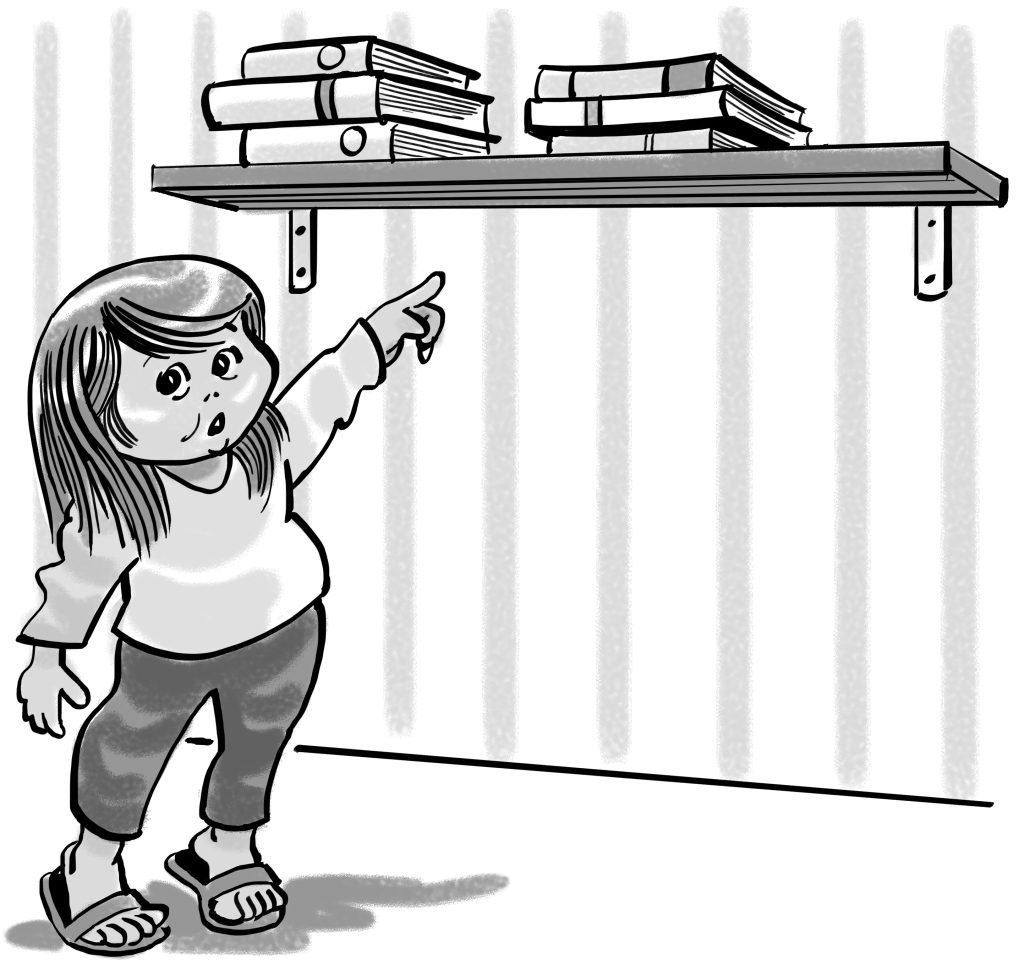
Creating Opportunities to Communicate and Prevent Challenging Behaviour
[autismspeaks.org]
Promoting and Responding to Communication
[autismspeaks.org]
Deliberate teaching moments
Productive roles
- Give your child as many productive roles as possible within your daily routines.
- For example, when it’s time to brush teeth, give your child roles like to turn on the light, take their toothpaste out the cup, take the lid off the toothpaste, hold their toothbrush while you put on the toothpaste, rinse their toothbrush under the tap, etc.
- You might need to start by giving a clear instruction while showing them how to do it, then you can gradually wait for them to do it without your help, just your language.
- Anything your hands are doing that their hands could do with your language (instruction) and support (help) is a valuable learning opportunity and helps your child tune in to and make sense of your language.
- Give an instruction once or twice, then offer more support to help make it happen. Don’t keep repeating the instruction too many times without acting, otherwise your child might practice ignoring your words.
- Learning to understand language in these meaningful activities will boost understanding and create a foundation for speaking.
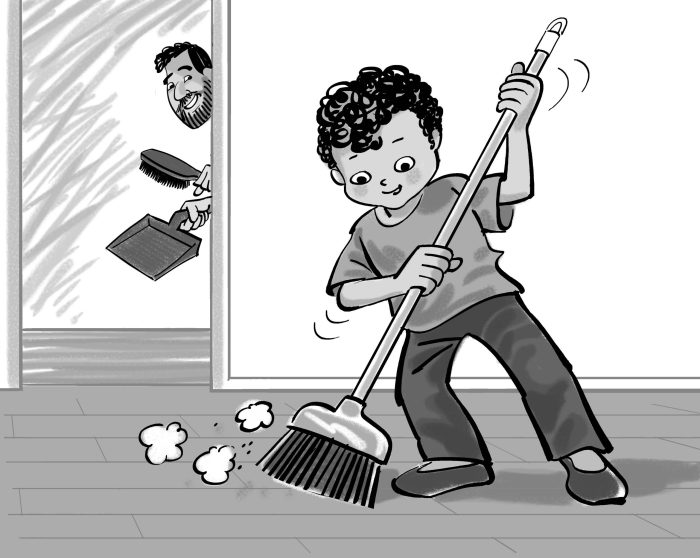
Using Home Routines to Promote Engagement and Prevent Challenging Behaviour
[autismspeaks.org]
Support for transitions
- Sometimes moving from one activity to another can be very challenging for your child.
- Support your child by giving warning when something is about to end and being clear what is coming next e.g. “One more swing then its snack time”.
- Showing an item from the next activity can also help transitions if your child doesn’t yet understand the words, e.g. holding up a bath towel to indicate its bath time.
- Visual supports, like a “Now and next” card, can also be very helpful for helping your child to know what will be happening next. You can use the template in the resource panel.
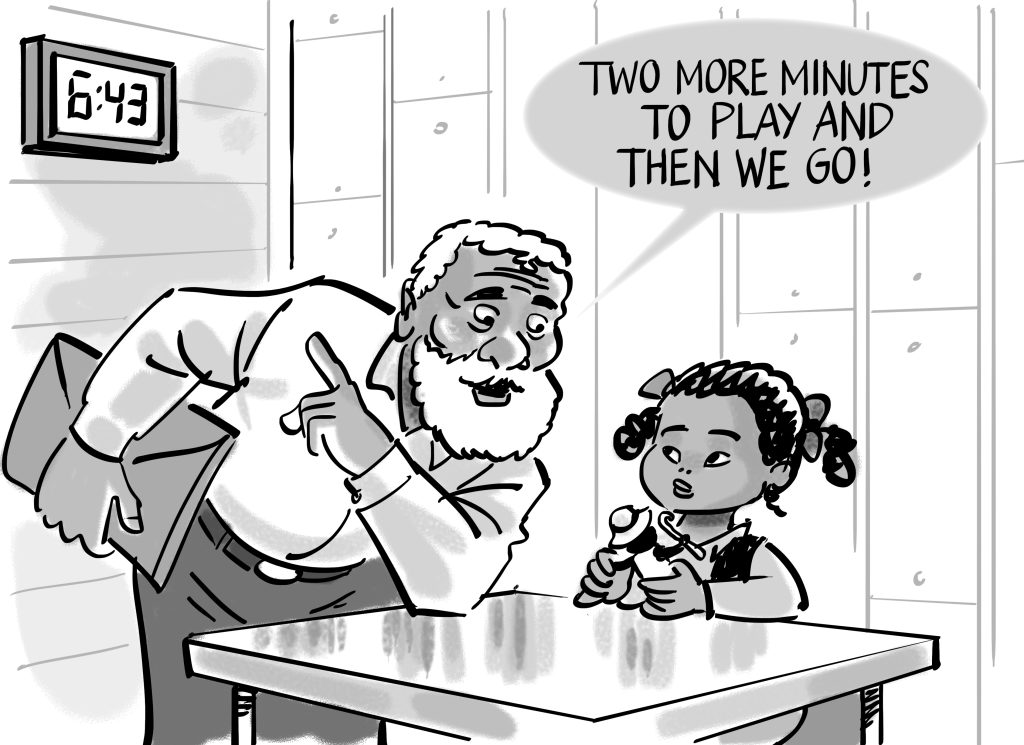
Now and Next Template
[ambitiousaboutautism.org.uk]
Other themes under 'What to do'
[1] Frost, K. M., Brian, J., Gengoux, G. W., Hardan, A., Rieth, S. R., Stahmer, A., & Ingersoll, B. (2020). Identifying and measuring the common elements of naturalistic developmental behavioral interventions for autism spectrum disorder: Development of the NDBI-Fi. Autism, 24(8), 2285–2297. https://doi.org/10.1177/1362361320944011
[2] Caregiver skills training for families of children with developmental delays or disabilities: introduction: Geneva: World Health Organization, 2022. Licence: CC-BY-NC-SA 3.0 IGO.